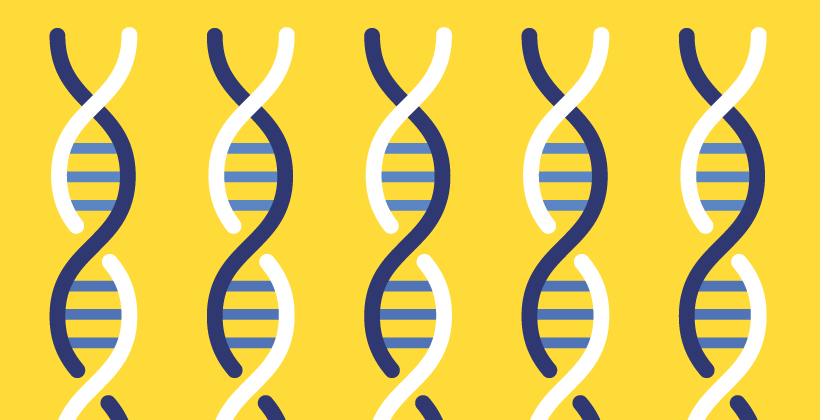European Union action plan to tackle food fraud
Last Updated : 04 December 2013Despite the integrity of the majority of the food industry and their commitment to consumer protection and consumer confidence, the issue of food fraud has gained attention in recent times. Although EU food law is very detailed with respect to food safety (including controls and tests in areas such as residues and other contaminants of food and feed), there is no framework in place specifically to target food fraud, other than the general stipulation that consumers may not be misled. To address this issue, effective measures are being identified to further strengthen European rules and controls. Several of these are reflected in the EU Action Plan to tackle food fraud.
Food fraud
Food fraud is committed when food is deliberately placed on the market with the intention of financial gain through consumer deception.1 Recent examples include the undeclared substitution of horse meat in beef products, the addition of melamine to milk and infant formula and the adulteration of chili powder with Sudan Red. To date, there is no clear definition of “food fraud” in European legislation.2
Routine monitoring and surveillance programmes are performed by national regulatory authorities across Europe to monitor foods on the market and to ensure that they comply with the requirements of food law and are safe to eat.
Horse meat in beef products
On January 15th 2013, the Food Safety Authority of Ireland (FSAI) reported findings from an authenticity study of meat products, which revealed the presence of horse DNA in frozen beef burgers sold in several Irish supermarkets.3 Of the 27 frozen beef burgers tested, 37% tested positive for horse DNA. One of the sampled beef burgers contained 29% horse meat. These burgers were labelled as containing beef, not horse meat.
The FSAI uncovered what eventually transpired to be a pan-European problem of adulterated beef products across many Member States. These findings resulted in extensive investigations and led to the recall of millions of burgers and ready meals from supermarket shelves around Europe.
Anti-fraud measures
The EU already has extensive controls and legislation in place to govern food traceability and labelling.4,5 However, the horse meat incident shed new light on fraudulent practices and the necessity to strengthen controls. The European Commission (EC) proposed an action plan to address the shortcomings identified in Europe’s food supply chain.6 This action plan aims to restore consumers’ and trading partners’ confidence, by strengthening several controls against fraudulent practices. This action plan was used as a basis for the Motion for a European Parliament Resolution on food crisis, fraud in the food chain and control thereof (2013/2091(INI)).2 The EC action plan consists of a series of actions which fall within the following five areas (some of these actions have already been implemented; others are to be implemented by 2014);
1. Food Fraud
The aim is to reinforce the EC’s capacity to address food fraud and therefore protect the interests of consumers. Upon discovering that some processed foods labelled as 100% beef actually contained horse meat, food safety authorities throughout Europe were able to swiftly exchange information through an existing database called RASFF (Rapid Alert System for Food and Feed).7 As a result, the fraudulent products were swiftly traced and withdrawn from the market. The EC envisages extending the scope of RASFF to help fight food fraud, by creating a dedicated IT tool, which will facilitate the rapid and cross-border exchange of information on intentional violations of food chain rules.6
2. Testing Programme
i) DNA testing of products:
A co-ordinated, EU-wide testing program was conducted for horsemeat DNA.8 Testing was conducted of food destined for the end consumer and marketed as containing beef. Thousands of DNA tests were carried out by the competent authorities and by food business operators (producers, processors and distributors) in 27 EU countries. Less than 5% of these tests revealed positive traces of horsemeat DNA.
ii) Testing for phenylbutazone residues:
Testing was also conducted for phenylbutazone in equine carcasses.8 Phenylbutazone is an anti-inflammatory drug used as a painkiller in veterinary medicine. It is not authorised for use in food-producing animals in the EU. Results revealed that approximately 0.5% of the equine carcasses tested were found to be contaminated with phenylbutazone.
Overall, the European Commission concluded that ‘the positive samples found in relation to horsemeat DNA combined with the very low levels of phenylbutazone detected represents a small part of the overall production in EU’.8 In addition, a joint statement published by the European Food Safety Authority (EFSA) and the European Medicines Agency (EMA) on 15 April 2013 concluded that the risks associated with phenylbutazone were of “low concern for consumers”.9
3. Horse passport
The issuing of horse passports and the overall monitoring and regulation of horses in Europe came to the fore as a result of the horse meat fraud. Currently, horse passports may be issued by numerous bodies within each Member State10; however, the EC is now proposing to transfer the issuing of passports entirely to the competent authority within each Member State in order to reduce the number of passport issuing bodies.6 Additionally, the recording of horse passports in a central national database will be mandatory. The intention is that this database will be used at abattoirs to verify the authenticity of the passport for each horse and to record its date of slaughter. Legislative changes have already been proposed.11
4. Origin labelling
The EC plans to introduce more effective labelling rules.6 Better food labelling allows consumers to make an informed purchasing choice. The proposals include an extension of the mandatory origin labelling rules (the exact requirements are to be defined by the European Commission; however, in the case of some meats it may include indicating place of rearing and place of slaughter).
5. Official controls, implementations and penalties
The EC has proposed that where financial penalties are used in relation to food fraud, they are at a level which is higher than the economic gain expected from the fraud. They have also proposed that Member States conduct mandatory unannounced official controls (including inspections and testing) directed at combating food fraud.6
Conclusion
The horse meat incident has been an important lesson for food businesses and regulators across Europe. It has demonstrated the importance of proper controls and dissuasive measures. The coordinated official controls, increased random testing and tougher financial penalties brought about by the implementation of the 5-point action plan should lead to a positive outcome for consumers; making it both more difficult and sufficiently deterrent for those who deliberately try to cheat and commit fraud along the food chain.
For more information:
Council of the European Union (2013). Commission actions in the field of food fraud.
References
- Everstine K, Spink J, Kennedy S (2013). Economically motivated adulteration (EMA) of food: common characteristics of EMA incidents. Journal of Food Protection 76:723-35. doi: 10.4315/0362-028X.JFP-12-399.
- European Parliament. Committee on the Environment, Public Health and Food Safety. (2013) Report on the food crisis, fraud in the food chain and the control thereof (2013/2091(INI)).
- Food Safety Authority Ireland (2013). Press release: FSAI survey finds horse DNA in some beef burger products.
- Regulation (EC) No 178/2002 of the European Parliament and of the Council of 28 January 2002 laying down the general principles and requirements of food law, establishing the European Food Safety Authority and laying down procedures in matters of food safety (L 31/1).
- Regulation (EU) No 1169/2011 of the European Parliament and of the Council of 25 October 2011 on the provision of food information to consumers.
- European Commission website, Food and Feed Safety section.
- European Commission - MEMO/13/524 (2013). 2012 Report on Europe’s Rapid Alert System for Food and Feed: Questions & Answers.
- European Commission (2013). Press release: Commission publishes European test results on horse DNA and phenylbutazone: no food safety issues but tougher penalties to apply in the future to fraudulent labelling.
- European Food Safety Authority (EFSA) (2013). Joint Statement of EFSA and EMA on the presence of residues of phenylbutazone in horse meat. EFSA Journal 11(4):3190.
- Commission Regulation (EC) No. 504/2008 implementing Council Directives 90/426/EEC and 90/427/EEC as regards methods for the identification of equidae.
- EC WORKING DOCUMENT (2013) implementing Council Directives 90/427/EEC, 94/28/EC and 2009/156/EC as regards methods for the identification of equidae (Equine Passport Regulation) and repealing Regulation (EC) No 504/2008.








